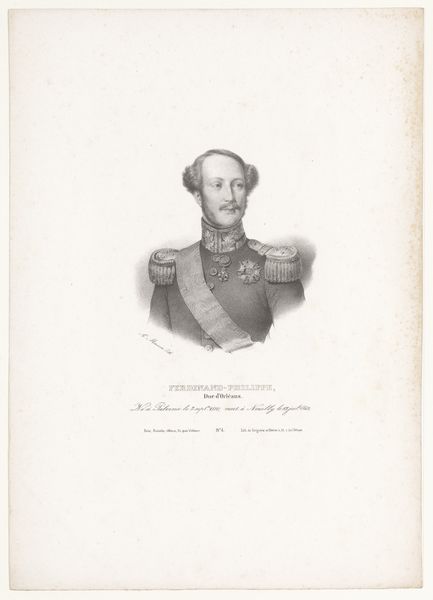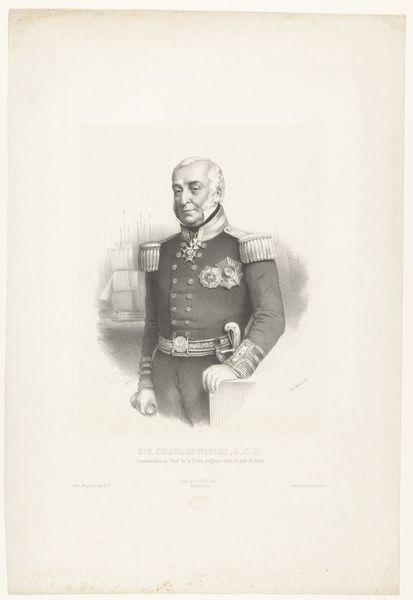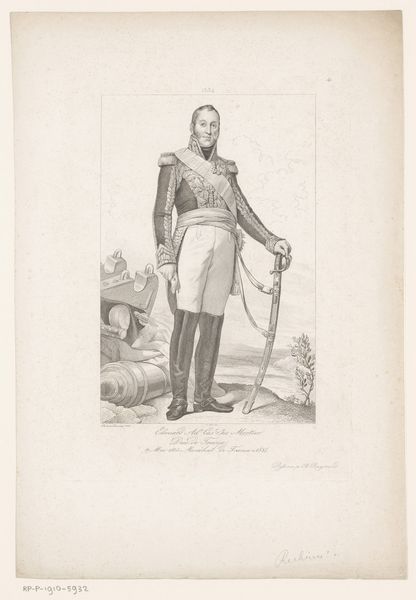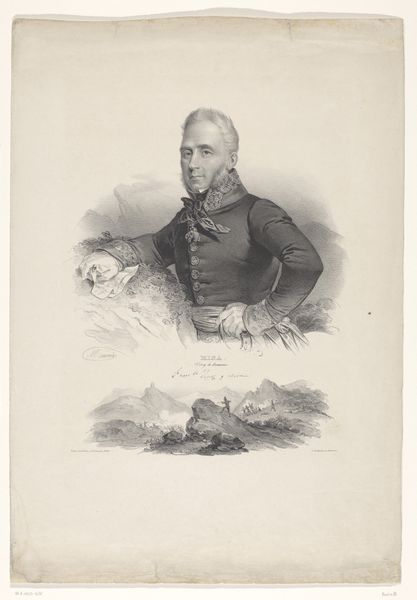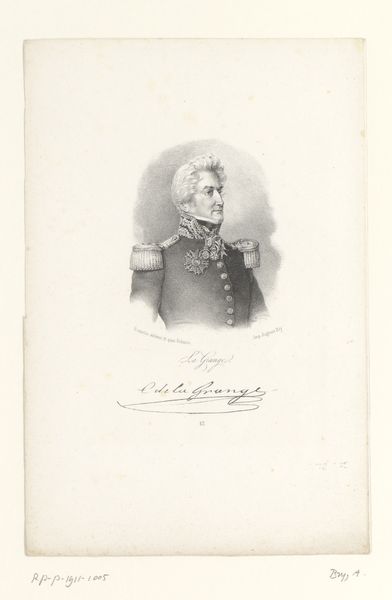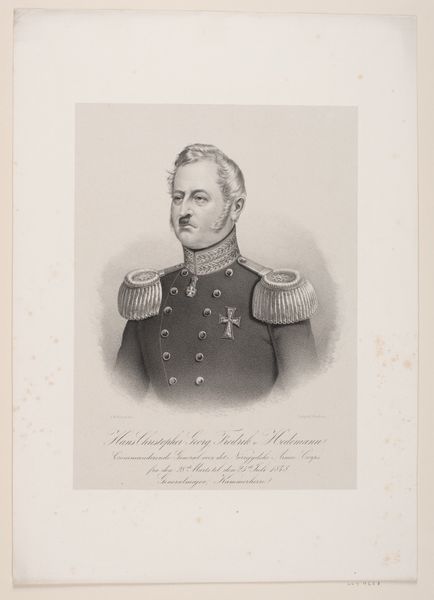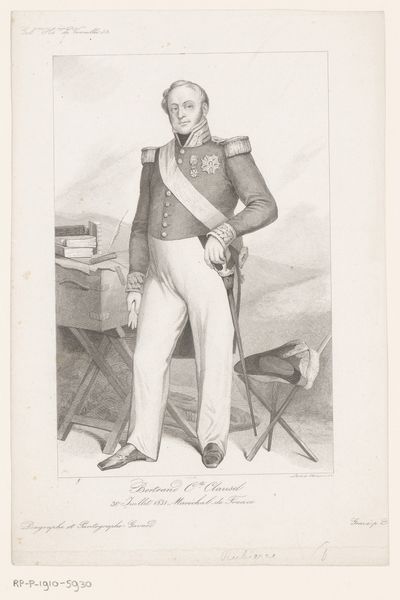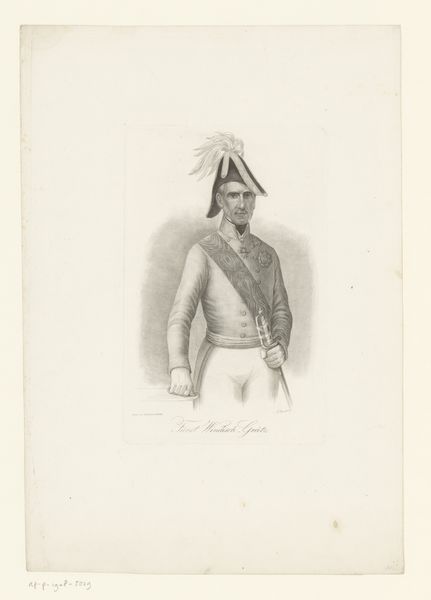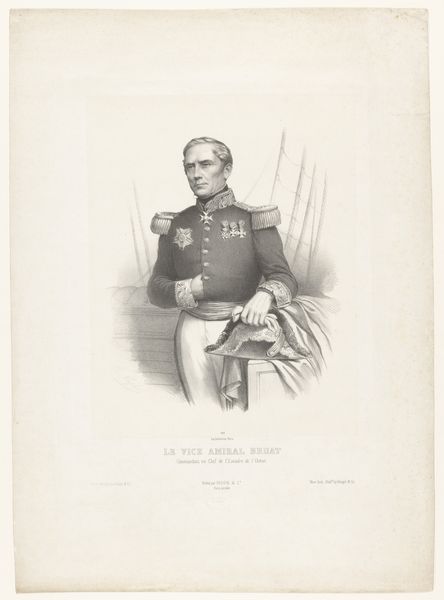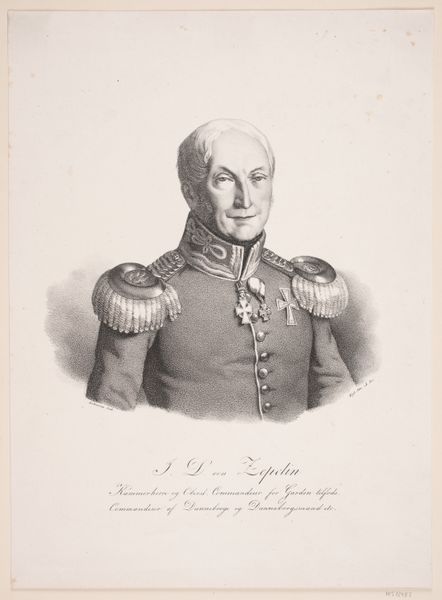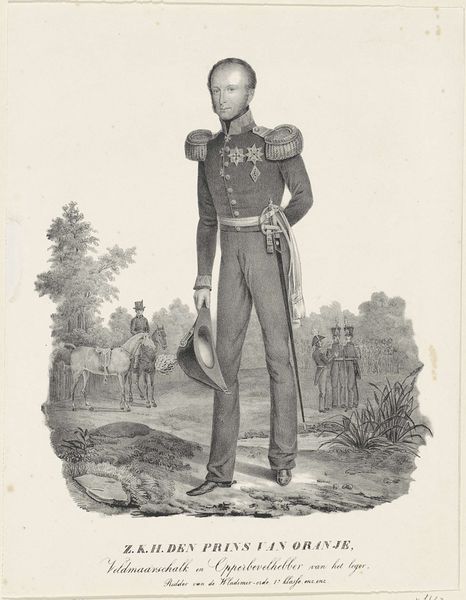
#
portrait
#
neoclacissism
# print
#
history-painting
#
realism
Dimensions: height 530 mm, width 377 mm
Copyright: Rijks Museum: Open Domain
Marie-Alexandre Alophe made this portrait of General Aimable Pélissier, likely as a lithograph, during the Second Empire in France. Pélissier is bedecked in military honors and positioned in front of a battle scene. The image encapsulates the period’s complex relationship between war, politics, and representation. Alophe worked as a photographer for the French government, and this portrait can be seen as an example of state-sponsored imagery. Lithographs like this one were a relatively inexpensive and efficient way to disseminate images, which might have influenced the choice of media. France at the time was expanding its colonial reach in Africa and Asia and extolling the virtues of its military leaders was a key element of its imperial ambitions. The portrait's visual codes, like Pélissier’s decorations and authoritative pose, serve to reinforce the General’s power, and by extension, the power of France itself. To fully understand the role this image played, we need to examine not just the artwork itself, but also the institutions that supported its creation and distribution, like the military and the government. These factors are crucial to understanding its historical meaning.
Comments
No comments
Be the first to comment and join the conversation on the ultimate creative platform.
